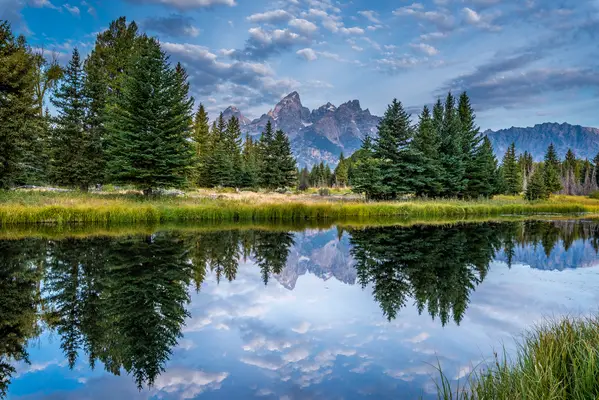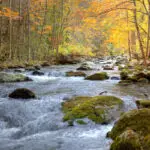Anyone who enjoys outdoor recreation has certainly built an appreciation for public land.
Public land plays an important role in our recreation as well as in the preservation of our natural spaces, but are state forests public land?
Public land can be managed at the federal, state, or municipal level. If you live in a state that has state parks and state forests, perhaps you’ve wondered what the difference is, and whether state forests are considered public land.
Table of Contents
- Are State Forests Public Land
- What is “Public Land”?
- What is the Difference Between a State Forest and a State Park?
- How Can the Public Use State Forests?
- Final Thoughts
Are State Forests Public Land
Yes, state forests are public land, usually managed by the state’s Department of Natural Resources, Division of Forestry, or similar.
Like other forms of public land, state forests are owned collectively by the citizens of the state.
Public access and recreation are allowed on state forest land, though as with other public lands, there are policies, restrictions, and permits in place that govern how you may use the land.
If you are interested in finding a state forest to enjoy near you, the US Forest Service has a great website with a bunch of information!
What is “Public Land”?
Public lands are areas of land and water that are collectively owned by citizens of the United States. They are managed by government agencies for conservation, recreation, and resource management.

Public land stands in contrast to private land, which is owned by an individual, business, or institution. Private land is managed by the owner acting under federal, state, and local law and policy.
The importance of noting that public land is owned by citizens of the state comes down to decisions governing the use of the land.
Citizens have a say in the formal decision-making around the use of public lands through their right to vote.
You may also like: Is it Legal to Pick Flowers on Public Land?
What is the Difference Between a State Forest and a State Park?
The difference between a state park and a state forest is similar to the distinction between a national park and a national forest. The main difference is the mission of the governing agency.
State parks are focused on conservation and recreation. They focus first on preserving the land and ecosystems as natural spaces, free of extraction, and second on providing the public with recreation opportunities.
State forests on the other hand follow a multi-use model of management. This means that state forests are used for conservation and recreation, but also the removal of resources to generate revenue.
State forests aim to balance timber extraction with protection efforts for wildlife, cultural and historical resources, and recreation.
Fees
Usually, state parks will have entry or parking fees for public access.
State parks will also usually have facilities like restrooms or visitor centers and are manned daily by staff and park rangers.
State forest, however, is usually free to access, though, there may be fees associated with things like campgrounds and permits for certain activities.
State forests often don’t provide the same amenities that you’ll find in state parks, are often unstaffed, and are less frequently patrolled.
Natural Areas
In both state parks and state forests, you might find areas deemed natural areas, or conservation areas. In these parts of the park, there may be different regulations and conservation efforts.
Whenever you head out onto public land it is important to look into the restrictions in place.
Failure to follow those restrictions can put you into a dangerous situation, carry a risk of a fine, or harm the ecosystem that is being protected.
How Can the Public Use State Forests?

Each state agency has different regulations on how the public can recreate in state forests. Most agencies will require a permit for certain activities like hunting, fishing, and camping.
There might be regulations for the removal of plant species or how and when you can have a fire.
Generally, state forests are open to the public for activities like hiking, biking, fishing, camping, and swimming.
There might be regulations in place around where you can camp and whether you can drive ATVs and snowmobiles on the trails and roads.
Each state will have slightly different regulations, and there may be different regulations for each forest area in a state.
As well, most state forests are open to seasonal hunting. Each state has different regulations on how, when, and where you can hunt.
As always, it is best to know before you go and to look up your local land manager if you have any questions.
See also: Can Public Land Be Closed?
Final Thoughts
State forests offer plenty of opportunities for recreation and conservation. It is important to be aware that the land is also used for the forestry industry, which may have implications for public access and use.
Make sure you understand your local policies and requirement before you head out to recreate, and remember that everyone has equal rights to use public land.
Follow the recommendations of land managers, and do your part to protect the land for future generations.






